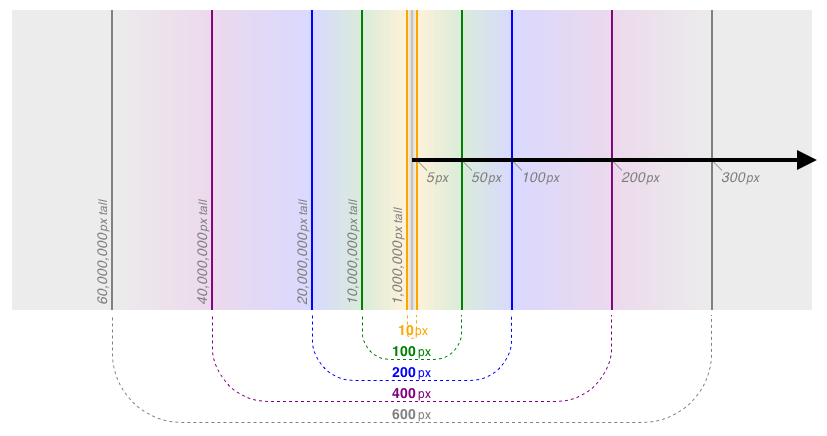Taking Steps
Published 10 years, 9 months pastNot too long ago, I got Step Nined on Facebook.
If that didn’t parse as regular English for you, Step Nine is part of the twelve-step program offered by Alcoholics Anonymous. It states, with edits for out-of-context clarity:
“[Make] direct amends to [people you have harmed] wherever possible, except when to do so would injure them or others.”
And so someone I knew back in the town where I grew up, a classmate all throughout my pre-college education who I’ll call John, sent me a private message on Facebook apologizing for how he’d treated me, stating that he’d had no reason other than just having been a mean kid, and hoping that things were going well for me and my family.
I’ve pondered this message quite a bit in the interim. The message brought me neither upset nor relief, though I can well imagine that many people in such a situation would feel one or both. I bore no mental or physical scars with his signature upon them. There was no need of closure, or of re-opening, or really of anything, at least from my point of view. He and his actions toward me, positive or negative, are one thin thread in the complex skein that was my childhood, lost in the overall pattern.
In truth, John’s message aroused more pity in me than anything else. I thought as I read it, What must he have endured as a child, that hurting other people seemed normal to him? And in that thought, I felt an echo from the past, as though the question had come to me before. Perhaps my parents made the observation, as I struggled through growing up, and I was finally able to hear it now. I’m not sure. It doesn’t really matter. If his message is anything to go by, whatever John did has been far more damaging to him than it ever might have been to me.
Still, I keep coming back to John’s message and pondering it further. What I’ve thought about, far more than its contents or the history it references, has been the simple fact of how it happened, and what that means.
Had John wanted to offer amends in, say, the late 1990s, he would have had to actively seek me out. It would have taken the effort of calling my parents to ask for contact information, or other people he thought might have it, and then making that call to me. The social distance would have been a barrier to contact, one whose surmounting signified the importance of the act to him. And then, when he did make that call, he would have talked to me, able to gauge my reaction. There would have been a feedback loop to tell him whether or not his amends were injurious in some way.
And yes, of course, John could have done exactly that today. He could have kept his process entirely off Facebook and gone through those efforts, as an act of personal penance or just as a useful social signifier. Or, perhaps, he could have contacted me on Facebook to ask for my phone number, with a brief statement as to why he was asking for it, and then let my decision to allow the contact or not be a measure of whether it would in fact be injurious.
But he didn’t. Because the internet has disintermediated social effort.
What I wonder about, as I ponder this small signal, is the depth of his remorse. How much does John really mean it, and how much is he going through the motions, trying to get through Step Nine as quickly as possible so that he can reach Step Twelve sooner? Is he working through his personal pain, or is he grinding the leveling process? It’s impossible for me to say. I know it’s a lot easier to send a bunch of “sorry” messages to your contacts than it is to talk to each person you feel you’ve wronged, one on one, one by one, and go through that painful process over and over and over again.
I wonder if that simple ease of contact has robbed him of a critical component of his healing process.
Or, if you want to be more accurate, I wonder if that simple ease of contact lured him into a course of action that was harmful to his healing process.
The things we build are almost always meant to make things faster, more efficient, easier. Perhaps, sometimes, they should be harder.
This genie will not go back into the bottle. The internet isn’t going away and Facebook still has a long way to go before its fall. Even then, something will have replaced it. There’s no reason to think these sorts of connections will become more difficult to make, technologically speaking.
I wonder if they will become more difficult, socially speaking — if an act like that will become frowned upon, as we might frown upon a form letter condolence note. I wonder what sort of protocols and expectations, what social mores, will emerge over time in response to the disruptions our work has caused and will cause, and how they will shape personal interactions at all levels.
I wonder how much effort we should be putting into influencing the evolution of those emergent social constructs, whether through our work or our personal interactions, and how much of that effort would be ultimately fruitless.
I wonder how intentional people are about what they do, online as well as off; and how intentional they should be.
I wonder what I should say to John.
This article was originally published at The Pastry Box Project on 2 March 2015.

